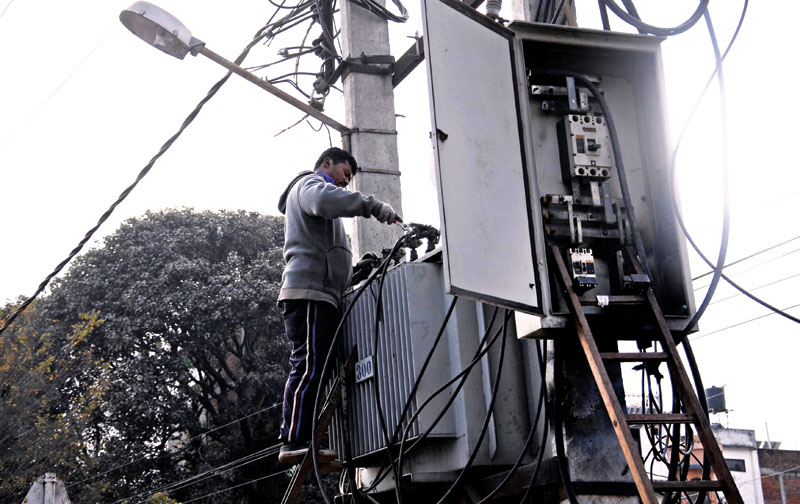IPPAN seeks extension to power evacuation cut-off date
Kathmandu, May 24
Hydropower developers have called on Nepal Electricity Authority (NEA) to extend power evacuation cut-off date for hydropower projects that were unable to conduct regular works during the border blockade due to shortage of construction materials, petroleum products and labourers.
According to present terms, hydropower developers have to evacuate power from the date mentioned in the power purchase agreement (PPA) signed with NEA. If the developer fails to evacuate power to the grid within the stipulated timeline, NEA levies a fine that is equivalent to five per cent of the total energy cost mentioned in the PPA.
Altogether, 15 projects that are under construction have submitted an application to NEA through the Independent Power Producers’ Association - Nepal (IPPAN) — the umbrella body of hydropower developers in the country — seeking an extension to the power evacuation deadline.
NEA, so far, has agreed to provide an extension of 138 days to the developers regarding the power evacuation clause due to the problems faced by the developers. However, projects have suffered for long even after the end of the border-blockade, said Khadga Bahadur Bisht, president of IPPAN. “Projects under construction have been adversely affected due to the border blockade and this is the reason we have been seeking favour from NEA to extend power evacuation cut-off date as per the request of developers.”
Similarly, IPPAN has asked the government to clear the dues of the power producers. The government, through load-shedding reduction action plan some four years back, had offered multiple rates for electricity. The rates had been set at
Rs 4.80 per unit in wet season and Rs 8.40 per unit in the dry season for five years for projects that were able to commission power by April 13, 2015.
The action plan offered three per cent growth in tariff every year for five years, but NEA has not paid the developers since mid-January of last year. IPPAN has sought clearance of all the dues through the upcoming fiscal budget.
IPPAN has also suggested increasing the share of ‘peaking run of the river’ and ‘run of the river’ types of projects in generation mix so that it could supply energy that is cheaper than that from storage projects.
The government aims to increase the share of storage projects to 40 to 50 per cent in generation mix, which is not practical enough, as per Bisht.
“Per unit cost of storage project and run of the river projects has a huge difference. If the government promotes storage projects, it will raise the cost of energy generation,” said Bisht.
IPPAN has suggested the government to increase the share of run of the river-based generation to 60 per cent in energy mix and 20 per cent of storage and 20 per cent of peaking run of the river in generation mix for cheaper energy.
As per the government’s plan of generation mix, the scope for run of the river-based projects is already saturated and there is space of PPA for only 400 megawatt. There is less involvement of private sector players in peaking run of the river and storage projects.






